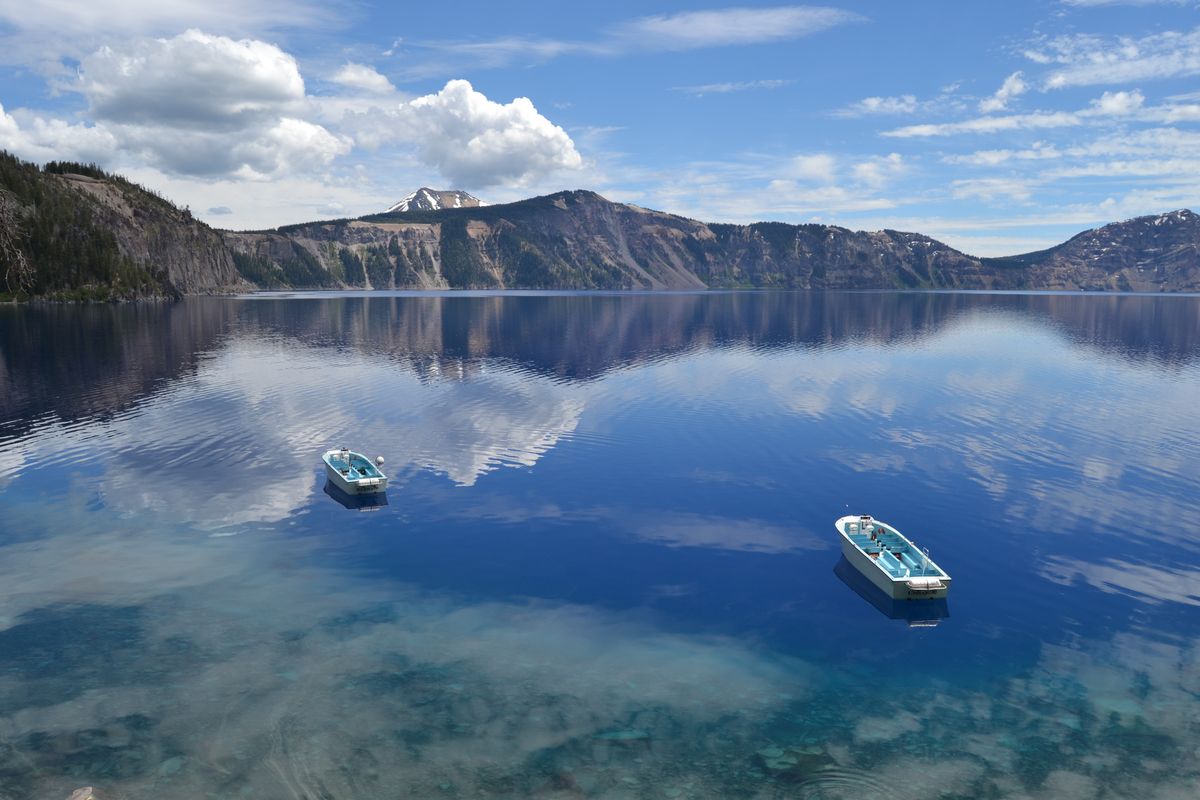Mountaintop jewel
Crater Lake definitely worth the hike to get to the country’s deepest lake

“Photos don’t do it justice.” That’s what I’d heard from almost everyone I spoke with before embarking on my first trip to Crater Lake National Park.
“Eh,” I thought to myself. “A lake is a lake, right?”
Wrong.
As I drove my way up the hill toward the deepest lake in the United States, my stomach did flip flops. This was my first camping trip of the summer, at one of the most beautiful places on Earth. Tapping my fingers on the steering wheel and singing along with the music playing through my car speakers, I rounded the corner to see a flash of the bright blue water and my natural reaction wasn’t something fit for print.
Scientists say the lake is among the clearest in the world and the remarkable color is a treasure.
I cannot emphasize how shocked I was to see the beautiful blue water banked in the six-mile wide caldera, sharply sided with the rocky remnants of old Mount Mazama that erupted 7,700 years ago.
As we could, my friends and I hopped out of the car and started snapping photos before heading to our campsite about 8 miles away from Rim Drive – the road that encircles the lake.
For $21 a night, you can stay at the Mazama Campgrounds, the closest campgrounds to the lake. The grounds have a variety of amenities including showers, restrooms, a small store, laundry services and more. Most are equipped with a picnic table, fire grate and a metal box to store food and or garbage away from bears. (Don’t fret. Rangers say a bear hasn’t been seen at Crater Lake in more than two years.)
While the campsites are a great place to hang out in during the evening, I wasn’t there to just sit around a fire.
Saturday morning we awoke after a chilly slumber (it gets rather cold at night so pack warm clothes).
After a camping breakfast feast, we packed our backpack with snacks, sunscreen, swimsuits and bug spray and set out for a hike. Many of the trails are closed due to snow and unsafe conditions until mid-July.
Of course, a trek down to the water was necessary. Cleetwood Cove Trail served the purpose, leading 1.1 miles to the lake.
The Mazama Campgrounds are about 8 miles away from Cleetwood Cove, so you have to drive to get there, but there’s ample parking near the trailhead.
The hike is made up of several steep switch backs and takes about 30 minutes to descend. On the way down I couldn’t help but to continuously take photos, as the view just keeps getting better. A rocky lake shore leads to the crystal blue waters of the 1,943-foot deep lake – the deepest lake in the U.S., second deepest in North America, ninth deepest in the world.
After scouting out a good spot on a giant rock, we took turns jumping into the water, ice cold from the season’s melted snow.
The initial shock of the freezing water took my breath away and chilled me to the bone.
But it was worth it.
Back at the top of the trail, we walked up the closed road a little bit to see the lake from a different perspective, and from higher points on Rim Drive, the lake seems like something out of a fairy tale – completely unreal.
For another perspective, the Park Service operates tour boats on the lake.
The boats were helicoptered in, since there is no road to the water’s edge, and only one trail along the lake’s 33-mile-long circumference leads down the steep cliffside to a boat dock.
Outdoors editor Rich Landers contributed to this story.